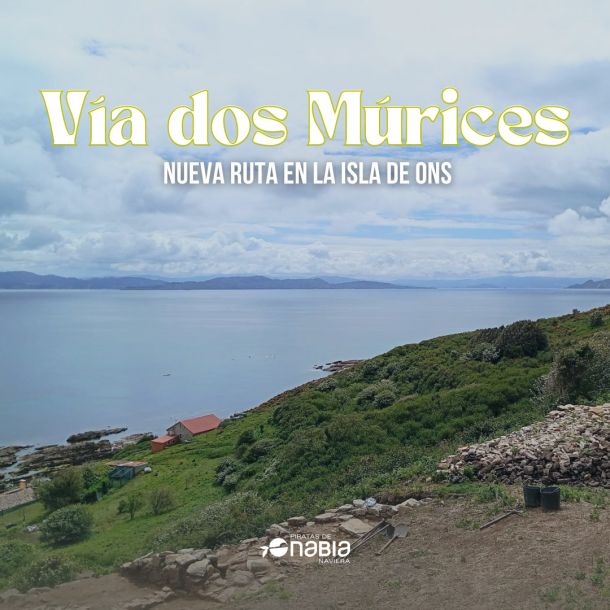What to do in the Rías Baixas
There is a wide range of cultural, gastronomic and sporting activities (among others) to do in the Rías Baixas. For this reason, more and more people are visiting the southeast of Galicia to discover its incredible landscapes, leaving behind the taboo of bad weather; and the fact is that, in this autonomous community, tourists not only accompany us during the summer season, it is also common to receive news of high occupancy rates in all the long weekends of the year.
What are the Rías Baixas?

The area between Cape Finisterre, in the province of A Coruña, and the border with Portugal, in the province of Pontevedra, is popularly known as Rías Baixas. In short, the Rías Baixas cover the west coast of A Coruña and the entire coast of Pontevedra. More than 300 kilometers of coastline that, as its name suggests, has several estuaries along its route.
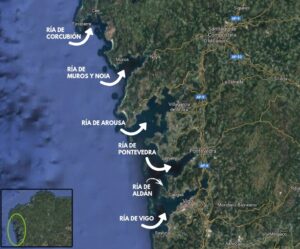
The main estuaries that make up this Galician area are, from north to south, the estuary of Corcubión, the estuary of Muros and Noya, the estuary of Arosa, the estuary of Aldán, the estuary of Pontevedra and the estuary of Vigo. All of them are larger than most estuaries in Galicia.
The Rías Baixas offer a wide range of possibilities and are ideal for all types of travelers. Tourism in Rías Baixas is coastal, gastronomic, includes cultural visits, contact with nature, water sports… everything has a place in the Rías Baixas.
The blue tones of the Atlantic Ocean blend with the green colors so characteristic of Galicia, creating a unique atmosphere full of peace and inviting to rest.

Some of the most visited coastal towns are Noia, Cambados, Sanxenso, Pontevedra, Baiona and Vigo. The journey along the coast allows you to visit small fishing villages, historical gems and large cities, all of which are easy to enjoy at any time of the year.
As we will see below, the Rías Baixas hide an incredible location, ideal for all ages and tastes. For example, gastronomy lovers should not miss a visit to the Rías Baixas, traditionally known as the best gastronomic area of Galicia. The fish and seafood are the specialtywhich, having just arrived from the port, are used in all kinds of stews and grills: from raw clams and oysters with a squeeze of lemon juice only, until trout and stuffed salmon, without forgetting the traditional octopus. All this washed down with wines from the Rias Baixas D.O., which has almost 30 different wineries that produce high quality wine and orujo.

In addition, if you like water sports, no matter what your favorite one is, you will surely find the place to practice it in this area of Galicia. Surfing, scuba diving, windsurfing, sailing, rafting, kayaking, water skiing and even fishing, the clean and rough waters of the Atlantic allow you to fully enjoy the water and release tension.
If you want to know them, we advise you to continue reading our selection of the best places to visit in the Rías Baixas. Without underestimating some points not mentioned, these are some of the must-see places that you should not miss if you are planning to travel to the north of Galicia, specifically to its beautiful Rías Baixas.
What to do in the Rías Baixas
As we said before, although all the estuaries in this southern enclave of Galicia have a similar geography, each one has its own charm, being its main tourist assets the boat trips in the Rías Baixas.
Below is a description of each estuary. All are suitable for any type of visitor, including families who want to spend their vacations in the Rías Baixas with children.
VIGO RIVER

Vigo is the most populated city in Galicia, which logically, makes it receive a greater number of visitors per year and its activity grows around tourism, offering visitors a large number of activities and areas to discover.
These are some of the best known places to see in the Ría de Vigo:
-
Cíes Islands
Undoubtedly, one of the essential visits if you go on vacation to the Rías Baixas.
Just half an hour from the Port of Vigo, in the Rías Baixas.these islands part of the National Park of the Atlantic Islands of Galicia and the are considered the shelter of Vigo, as they serve as protection from strong winds and waves to the port and sailors, being arranged right at the entrance to the estuary.
After a short half-hour boat ride, we can reach these beautiful islands. If you are looking for the best beaches in the Rías Baixas, you should not forget the beach of Rodas, considered one of the best in the world by some of the international specialized press, such as, for example, the British newspaper The Guardian.
 In addition, the islands have viewpoints, campsites and restaurants, so it is possible to visit them for more than one day (although many travelers choose the option of taking the boat early in the morning and returning later in the day).
In addition, the islands have viewpoints, campsites and restaurants, so it is possible to visit them for more than one day (although many travelers choose the option of taking the boat early in the morning and returning later in the day).
From Naviera Nabia we recommend planning your visit to the Cíes Islands well in advance, as the number of visitors to the island is limited due to environmental impact.The permit requires the processing of a special permit that you must apply for online on the page that the Xunta de Galicia has prepared for this purpose.
-
Vello Helmet
Vigo was characterized in the 80’s as one of the most modern cities in Spain, even competing with the famous “movida madrileña” in terms of cultural revolution. The heritage of that era remains in the old part of the city.

The old town of Vigo keeps great stories in its old buildings and historical monuments, which in turn are interspersed with new premises adapted to modern times. It is a great area for leisure, shopping and restaurants that offers places like the market of A Pedra, where you can delight your palate with its famous oysters and other seafood, such as clams, crabs, or spider crabs.
At the same time, its nights are very pleasant, as the city has several pubs where locals and tourists enjoy the movement of the city until late at night.
-
Major events
In addition to everything you can see and eat in the Rías Baixas, there are also special days or festivities that you cannot miss, such as the day of “A Reconquista”.which commemorates the popular uprising of the people of Vigo that succeeded in expelling the troops of Napoleon’s army.on March 28, 1809.
Also in Vigo, during the month of December, you can see the largest Christmas tree in the world or, if you like extreme sports, go to “O Marisquiño”, the largest event in Spain of risky activities (with skateboarding, downhill biking, etc.).
 Finally, if you are more of a traditional sports fan, you can always enjoy a R. C. Celta soccer match at the Estadio Municipal de Balaídos.
Finally, if you are more of a traditional sports fan, you can always enjoy a R. C. Celta soccer match at the Estadio Municipal de Balaídos.
-
Green path
Increasingly aware of the environment and the problems of car use, Vigo wants to give its citizens and tourists, up to four kilometers of walk where to go knowing their different environments with a path already underway.
The green path, whose construction will soon be completed, will have five lanes, three for bicycles and two for pedestrians, linking the center of Vigo with those more peripheral but interesting areas that previously went unnoticed by tourists.
ALDAN RIVER
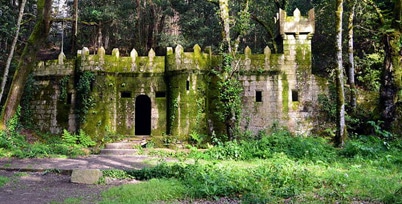
The Ría de Aldán, close to Vigo, is for many Vigueans a place of refuge in summer seasons. That is why this estuary has more and more visitors, especially the Galicians themselves who, seeking to escape from the overcrowding of the most popular beaches, find in Aldán the ideal paradise.
The very orientation of the estuary makes its waters are in a permanent calm that invites you to swim. Extensive sandy beaches and beautiful crystal clear waters that are born at the foot of the mountain, are the main attractions of the estuary, also known for its good food.
Among its restaurants, mussel dishes in different varieties are typical, something that is logical if we think that a considerable part of its population is specialized and works in mussel farms, collecting this delicacy from the famous rafts of the Rias Baixas.
Among some of the most common activities, we find sailboat rides that you can rent, with or without skipper, along the best beaches of the estuary. You can also enjoy other services, such as campsites, where it is possible to spend an incredible vacation for very affordable prices.
PONTEVEDRA ESTUARY

From the south to the north of Galicia, and after passing the estuaries of Vigo and Aldán, we arrive at the Ría de Pontevedra.
Pontevedra is a city of great tourist interest due to its orderly layout, which has made its streets recognized practically all over the world and serves as an example of a sustainable city. Thus, Pontevedra is emerging as an example of a humanized city, which can be visited without the need to take the car. With this in mind, it is no wonder that ambassadors from Dubai and European Union countries have come to visit to soak up its best ideas for inspiration.
While on land this is its main attraction, tourists can enjoy sailing and pleasure boat rides, and there are several rowing clubs on its shores.
Sailing along the Ría de Pontevedra, we will find two of the best known sites of the Rías Baixas, among other reasons after the summer visits of King Emeritus Juan Carlos I and former Prime Minister Mariano Rajoy. We are talking about Sanxenxo, known for its many restaurants and night parties, as well as Portonovo, a somewhat quieter area, focused on tourism with a higher purchasing power.
AROUSA RIVER
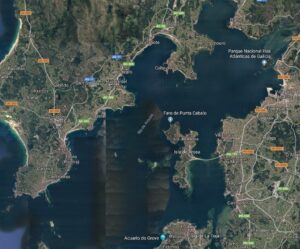
Connected by a bridge with Vilagarcía, we find A Illa de Arousa, a place to highlight its beautiful beaches and its magnificent gastronomy linked to the sea.
A large part of its inhabitants are dedicated to fishing, more specifically to the shellfishing of clams, being Carril one of the cradles of reference when it comes to tasting this mollusk seafood style, traditional dish of the place. Carril also has its own clam festival, the Festa Da Ameixa Do Carril, which is held on August 18th and 19th every year.
But we all know that a good seafood must be accompanied by a good wine, so in our walk along the Ría de Arousa, we can’t forget to take a short excursion through its incredible vine-covered mountains.that allow a whole country and part of a foreign country to enjoy such popular wines as Barrantes or Albariño..
Continuing with the most significant festivals of the Ría de Arousa, we find San Roque in Vilagarcía de Arousa, popular for attracting all Galicia and part of Spain to its water festival.
RÍA DE MUROS AND NOIA

Perhaps the least known of the Rías Baixas but with a spectacular setting where houses and boats merge with the sea in their lands and beaches, the estuary of Muros and Noia is located in the northernmost part of the estuaries.
It receives far fewer tourists than other estuaries and has a smaller number of inhabitants butwhich at first might seem less attractive, is a plus for peace of mind, for example to be able to enjoy vacations in the Rias Baixas with childrenwithout large crowds or hustle and bustle of parties or tourists.
Among its most visited points and places to see in Muros and Noia, we highlight the magnificent preservation of its ancient buildings, with arcaded streets, countless churches and squares, as well as emblazoned houses built centuries ago.
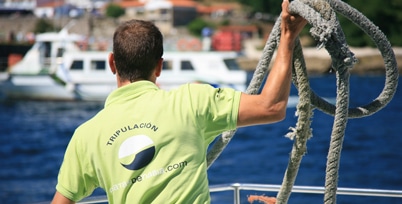
If you are more of a beach person, there are dozens of beaches with great sandy areas, such as Arnela, Arealonga or A Gafa, all of which have been awarded the blue flag.
Mountain, beach, boat trips and good food, with great dishes typical of Galician gastronomy, make both Muros and Noia, which share an estuary, two places you can not miss in the Rías Baixas.
Now that you know what to see in the Rías Baixas, you can plan your next days off with ease. We are waiting for you in the Rías Baixas, a symbol of good food, relaxation and fun. But be warned, it is said that those who visit Galicia, given its charm, always come back.
